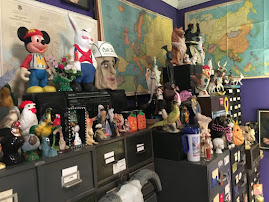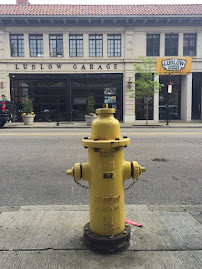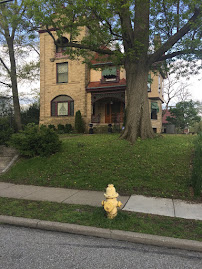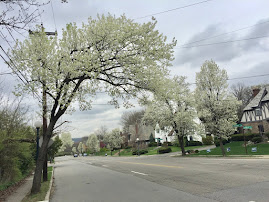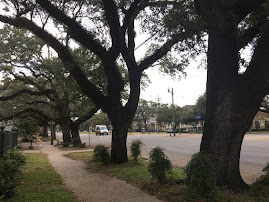Dear George,
While I grew up in a town of ten thousand, Greater Cincinnati’s population is over 200 times greater, and consequently there are 200 times as many newsworthy events each year. Many of these border on the weird, silly, or perplexing. Here are my favorites for 2021 (note: pseudonyms used throughout).
Love,
Dave
ANTI-VALENTINE’S DAY
In support of people who plan to hold an anti-Valentine’s Day celebration to purge themselves of past relationships, Cincinnati’s Junk King company is sponsoring a “Dump Truck” in suburban Blue Ash. People are invited to dump all reminders of their ex-lovers, from photos and stuffed animals to clothes and jewelry. For each item dumped, Junk King will donate $1 to the American Heart Association. (local12.com, 2-3-21).
BAD WIFE
Linda Cretch, 67, has a parole hearing next month for her life sentence for murdering her husband. Cretch shot her husband, Walter, in the head, then wrapped his body in a rug and kept him in the basement before finally burying him in their backyard. She enlisted the help of her three young children, a neighbor, and her father-in-law with digging the hole on the pretense of fixing drainage issues and planting grass seed. Cretch then went on a spending spree. Her father became suspicious about the backyard hole, dug it up, and found Walter’s body a week later. (cincinnati.com, 2-5-21)
FOLLIES OF YOUTH
A 15-year-old boy is facing criminal charges, accused of secretly recording video footage in a girls’ locker room at his high school. Two girls found the boy’s phone on a pipe in the rafters during a swim meet, and it was recording video. Minutes later the boy came to the locker room and asked if anyone had seen his phone. The girls gave the phone to the authorities, and the boy now faces three counts of attempted voyeurism. He was not successful in capturing any illicit images. (cincinnati.com, 2-18-21)
CORN FLAKES WITH A KICK
U.S. Customs officers in Cincinnati reported finding 44 pounds of cocaine-coated cornflakes that had been shipped from Peru to a Hong Kong home. A narcotics detection dog named Bico alerted officers to the package. The corn flakes had an estimated street value of $2,922,400. (wlwt.com, 2-19-21)
SALES SURGE
Cincinnati’s Gorilla Glue company has been in the news a lot, even making Saturday Night Live, ever since Tessie Brawn tried catastrophically to straighten her hair with Gorilla Glue. Local fans worried that the bad publicity would harm the company. Quite to the contrary, Google searches of “Gorilla Glue” are up 50%, and national sales have more than doubled. It’s not clear whether recent buyers are using the product on their hair. (wcpo.com, 2-19-21)
BAD MAN UNDER THE BED
A Cincinnati mother of a teenage girl discovered that a 20-year-old man had been living under her daughter’s bed for three weeks. Jared Wight from Barberton met the girl on instagram. He came out during the night to have sex, take nude photos, and then return to his hideaway. Authorities charged him with three counts of rape and child pornography. (cincinnati.com, 3-18-21)
GUN COUNTRY
According to federal authorities, Addyston police chief Darian LeCour, 65, procured hundreds of machine guns under the guise of testing them for police use, then sold them to two Indiana gun dealers who resold them for a profit. One of the guns with a vehicle-mounted M2 .50 caliber machine gun designed to be used against armored vehicles and low-flying aircraft. Chief LaCour faces 5-10 years in prison on each of 17 counts. (cincinnati.com, 3-26-21)
MISSING MONKEYS
Sammy Trinch reported to the police that she saw at least five monkeys across from her home near St. Joseph’s Cemetery on West Eighth Street. Her neighbor Lucy Griffin recorded a video, although the quality is grainy. Trinch said the video shows three monkeys in a tree, but there were two more on the ground. Another woman said she saw one of the monkeys. “I was right here and it was standing over by the garbage can…Its arms were real skinny.” Police responded the next day but only found owls mating — a noise that could sound like monkeys. The Cincinnati Zoo said that none of their monkeys were missing, leaving the monkey mystery unsolved. (wlwt.com, 4-16-21)
WORST MOTHER EVER
Brittany Gorney, 29, and her boyfriend, James Hamil, 42, are charged with murder, kidnapping, endangering children, and abuse of a corpse. The couple hog-tied Gorney’s three kids, tying their hands and feet, and placing a cloth material in their mouths for a period of hours. Later they drove the three children to the Rapid Run Wildlife area in order to abandon them. Six-year-old James grabbed the door handle as Gorney sped off. When she returned 40 minutes later, she found James dead. They put the body in the car with the other children, kept it at home for 48 hours, then tied it to a concrete block and dumped it into the Ohio River. The body hasn’t yet been recovered. Brittany pled not guilty by reason of insanity. (wlwt.com, 4-26-21)
EIGHT ARRESTS THIS YEAR
Cassandra Richards, 28, of nearby Blanchester was arrested for the eighth time in a year after at an incident at Gold Star Chili. Richards came to the store to demand a refund for food and was asked approximately 20 times to leave the premises. When employees called the police, Richards went outside, opened the drive-thru window, and tried to climb through. She resisted arrest and repeatedly banged her head against the interior of the police cruiser while being taken to jail. Richards already faced nine criminal trespassing charges, one aggravated menacing, one possession of drug paraphernalia, and six resisting arrest. (local12.com, 4-1-21)
CICADA CRASH
Vince Bingram, 20, of New Richmond was driving his 2017 Chevy Cruze along Riverside Drive during the dinner hour when a cicada flew in through his open car window and struck him in the face. Bingram lost control and crashed into a pole, totalling the car. The cicada stayed in the back seat. Bingram was not alone. Cincinnati police reported responding to four different local crashes involving cicadas. (10tv.com, 6-9-21; wlwt.com, 6-11-21)
BB ATTACKS
Sisters Brittany Hepper, 29, and Kelsy Hepper, 28, and driver David Wright, 30, were arrested for shooting at homeless people from their car in downtown Cincinnati and Over-the-Rhine with BB guns. The results were recorded by cameras on the scene which led police to the car. The Heppers had spray-painted the hood of the car to avoid detection, but their effort was unsuccessful. Both Hepper sisters face assault charges. (wcpo.com, 6-9-21)
GREAT CINCINNATI CICADA ROBBERY
This month marks the 34th anniversary of the Great Cincinnati Cicada Robbery. According to police reports, two men walked into the Grand Slam Restaurant brandishing a cicada. They thrust the bug at the cashier Marquita Kellagg, 22, who then fled from her post. Later, after Ms. Kellagg had recovered and returned to the register, she found that it was missing $25. The cicada robbers were never found. (cincinnati.com, 6-19-21)
THE MAGNETIC VACCINE LADY
Republican State Rep. Jennifer Grotch of West Chester helped spread the claims of Dr. Sherry Tenperry when she invited the doctor to testify before the Ohio House Committee in support of “Vaccine Choice”. Tenperry reiterated her claims that COVID-19 vaccines turn people magnetic and “interface” with 5G cell towers. The publicity promoted a slew of social media videos of vaccinated people trying to get spoons to stick to their noses. (citybeat.com, 7-15-21)
OUR NEW HIPPO
Tucker, an 18-year-old Nile hippopotamus, arrived at the Cincinnati Zoo from the San Francisco. He will be the new boyfriend of 22-year-old Bibi, and they have begun to spend time by the pool bonding and sharing beets, squash, melons, and hay. Male hippos are typically 1,000 pounds larger than females. Also, when pooping, they spin their tails like a propeller and spray feces everywhere. A big mess for keepers in the hippo barn. (wlwt.com, 9-17-21)
NEEDS A HUG
40-year-old Trenton Antonio Fortey of North College Hill was arrested after stabbing his mother multiple times with a kitchen knife while she laid in bed in an apartment. His mother, Vanessa Quarreles, was pronounced dead at the scene. Booked into the Hamilton County Justice Center, Fortey asked Sgt. Marc Drones for a hug. When Drones asked why, Fortey responded, “Because I stabbed my mother.” (cincinnati.com, 12-20-21)











































































































